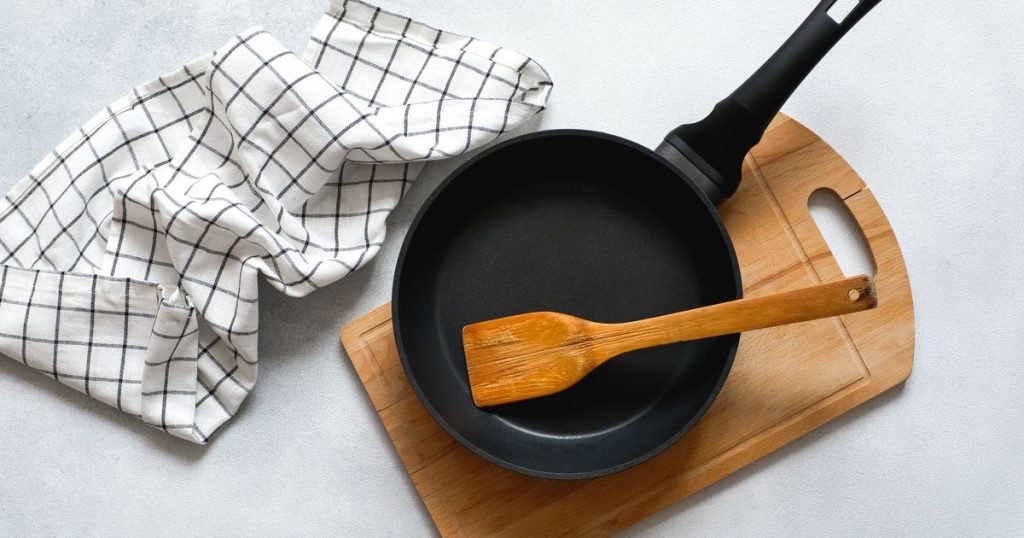When I purchased my first set of pots and pans, I made sure they were coated with Teflon because, at the time, it was the gold standard in nonstick cookware. I wanted to enjoy the freedom of cooking without the hassle of scrubbing stuck-on food for hours. My husband and I used our Teflon cookware happily for years, but when news began surfacing in the early 2010s about the potential dangers of Teflon, I decided to replace my entire set. Over the years, I transitioned to stainless steel, cast iron, and ceramic-coated cookware. However, Teflon eventually found its way back into my kitchen due to its ease of use and affordability. Now, with four children at home, I can’t help but worry about how Teflon might impact our health, especially as my new Teflon cookware shows signs of wear and tear. My husband dismisses my concerns, arguing that Teflon cookware is now safe to use. To settle this debate, I turned to the experts to get some answers.
### Identifying Teflon Cookware and Its Advantages
Teflon cookware remains popular despite its risks because it offers several advantages over other nonstick options. According to David Nadler, a research assistant professor at the New York Institute of Technology, Teflon outperforms other nonstick cookware in terms of performance and cost. It’s often more affordable than ceramic-coated cookware or high-end stainless steel and cast iron options. Additionally, Teflon cookware requires less maintenance because it doesn’t need seasoning and doesn’t require cooking sprays or oils to maintain its nonstick properties. To determine if your cookware contains Teflon, check the label for the words “Teflon” or “PTFE.” If the packaging is gone, look for the Teflon logo on the bottom of the pan. If the logo isn’t present, inspect the surface for a smooth, shiny, dark finish, which is characteristic of Teflon.
### The Concerns Surrounding Teflon
The concerns about Teflon primarily revolve around its historical use of perfluorooctanoic acid (PFOA), a type of polyfluoroalkyl substance (PFAS), often referred to as “forever chemicals.” PFOA was a key component of Teflon cookware manufactured before 2013. According to the Environmental Protection Agency (EPA), exposure to PFAS, even in small amounts over time, has been linked to serious health issues, including decreased fertility, developmental delays, hormonal imbalances, and an increased risk of certain cancers. Manufacturers stopped using PFOA in Teflon cookware in 2013, replacing it with short-chain PFAS, which is considered less harmful and doesn’t remain in the body as long. While this change has made modern Teflon cookware safer, concerns still linger for many consumers.
### Is Teflon Still Dangerous?
Experts agree that modern Teflon cookware, made without PFOA, is much safer than its older counterparts. A. Daniel Jones, a professor emeritus at Michigan State University, explains that short-chain PFAS is believed to pose minimal risk to human health when used properly. He notes that the likelihood of these chemicals seeping into food or the air is low when Teflon cookware is used correctly. Jones also points out that exposures from Teflon cookware are often dwarfed by other common sources of PFAS, such as contaminated drinking water, certain consumer products, and even raincoats or cleaning products. However, this doesn’t mean Teflon is entirely risk-free. Proper care and usage are essential to minimize any potential dangers.
### Minimizing the Risks of Using Teflon
To enjoy the benefits of Teflon cookware while keeping risks to a minimum, it’s important to follow some simple guidelines. The biggest risks come from overheating and using damaged cookware. Nadler warns that extreme heat can cause the chemicals in Teflon to release toxic fumes, which may lead to “Teflon Flu,” a condition characterized by headaches, fatigue, and flu-like symptoms. Pet birds are particularly vulnerable to these fumes, and exposure can be fatal for them. To prevent this, Jamie Alan, an associate professor of pharmacology and toxicology at Michigan State University, recommends keeping the heat as low as possible and avoiding empty pans, which can quickly reach dangerous temperatures. Additionally, scratched or chipped Teflon cookware should be replaced, as the damaged areas can release harmful particles into food. Most Teflon cookware lasts about five years, but it should be replaced sooner if it shows visible signs of wear. By taking these precautions, the risks associated with Teflon cookware can be significantly reduced.
### A Balanced Perspective on Teflon Use
While Teflon cookware has faced criticism in the past, the consensus among experts is that modern versions are much safer than older ones, provided they are used and maintained properly. Nadler emphasizes that the biggest health risk in the kitchen is likely the food being cooked, not the cookware itself. For those who enjoy the convenience and affordability of Teflon, it’s reassuring to know that the risks are minimal when care is taken to avoid overheating and damage. However, for those who remain uneasy, alternatives like stainless steel, cast iron, or ceramic-coated cookware are excellent options. Ultimately, whether Teflon cookware is right for you depends on your comfort level, cooking habits, and the steps you’re willing to take to ensure safe usage. With the right precautions, it’s possible to enjoy the benefits of Teflon while protecting your health and the health of your family.
